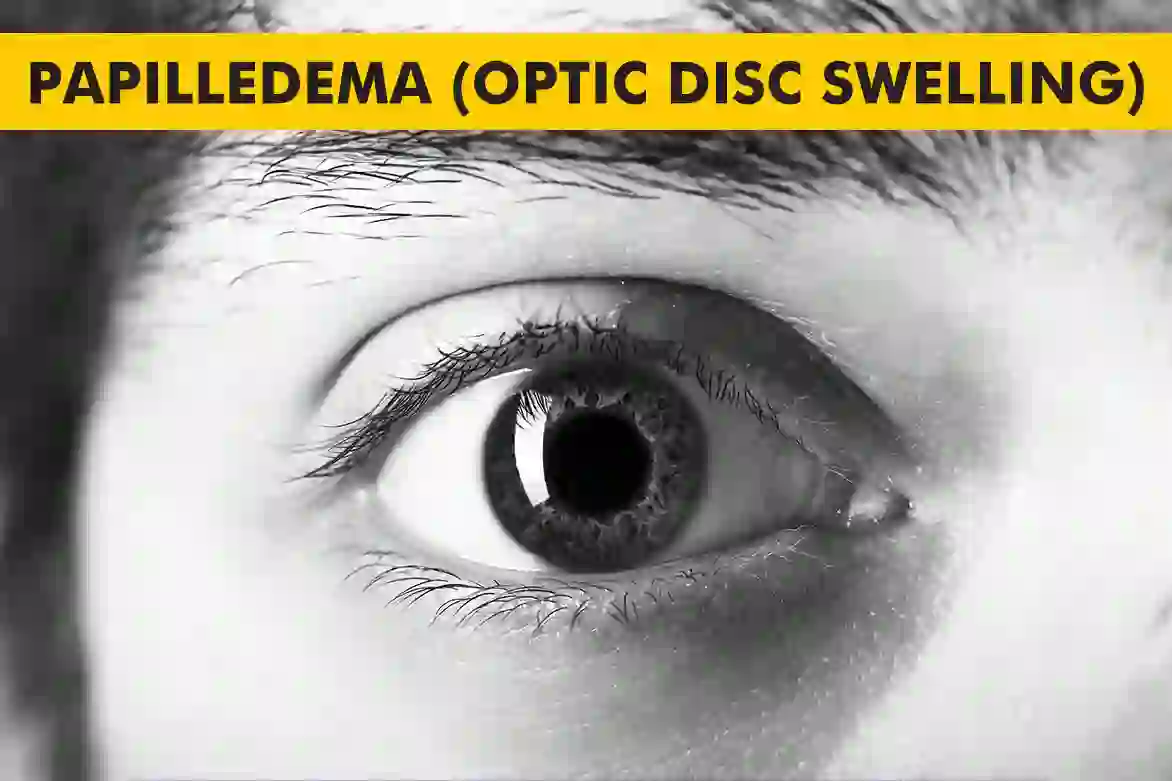Understanding Papilledema
Papilledema refers to the swelling of the optic disc due to increased intracranial pressure. The optic disc is the point where the optic nerve connects to the retina, and when pressure builds up inside the skull, it affects this crucial part of the eye. This condition can lead to visual disturbances and, if left untreated, may result in permanent vision loss.
Understanding the causes of papilledema is essential for early diagnosis and effective treatment. While the condition itself is not a disease, it is a warning sign of an underlying issue that requires immediate medical attention. Identifying the cause is critical to determining the best course of action.
Causes of Papilledema
Increased Intracranial Pressure
The most direct cause of papilledema is increased intracranial pressure (ICP). The brain and spinal cord are surrounded by cerebrospinal fluid (CSF), which helps cushion and protect these structures. When the pressure of this fluid rises, it compresses the optic nerve, leading to optic disc swelling.
Several conditions can contribute to increased intracranial pressure, including brain tumors, head trauma, hydrocephalus, and meningitis. Increased CSF production or reduced absorption can also lead to elevated pressure within the skull.
Brain Tumours
Brain tumours, whether benign or malignant, can occupy space within the skull and increase pressure. As the tumour grows, it reduces the available space for CSF circulation, leading to a rise in ICP. This pressure transmits to the optic nerve, resulting in swelling and potential vision problems.
The location of the tumour plays a significant role in determining the severity of symptoms. Tumours near the brainstem or in regions affecting CSF flow are more likely to cause papilledema.
Traumatic Brain Injury
Head trauma from accidents, falls, or sports injuries can lead to bleeding in the brain (hematomas) or swelling (oedema), both of which contribute to increased intracranial pressure. Even mild concussions may disrupt CSF flow temporarily, but severe injuries can cause prolonged pressure build-up.
Patients with head trauma often experience headaches, dizziness, confusion, and in severe cases, loss of consciousness. Any head injury should be evaluated promptly to prevent complications like papilledema.
Meningitis and Encephalitis
Meningitis is an inflammation of the protective membranes covering the brain and spinal cord, often caused by bacterial or viral infections. Encephalitis refers to brain inflammation, usually due to viral infections. Both conditions can result in increased ICP due to swelling and excessive CSF production.
Symptoms of meningitis and encephalitis include fever, stiff neck, severe headaches, and altered mental status. Immediate medical attention is necessary to prevent complications, including vision impairment from papilledema.
Idiopathic Intracranial Hypertension (IIH)
Also known as pseudotumor cerebri, IIH is a condition where increased intracranial pressure occurs without a detectable cause, such as a tumour or infection. It is more common in young, overweight women and is associated with hormonal imbalances and certain medications.
Symptoms include persistent headaches, blurred vision, ringing in the ears, and double vision. Although the condition is not life-threatening, untreated IIH can lead to progressive vision loss.
Symptoms of Papilledema
Visual Disturbances
Papilledema often presents with vision-related symptoms, including blurred vision, transient visual obscurations (temporary vision loss lasting seconds), and double vision. If the condition progresses, patients may develop blind spots or a loss of peripheral vision.
Headaches
Persistent headaches, particularly those that worsen upon waking or when lying down, are common in individuals with papilledema. These headaches may be accompanied by nausea and vomiting, further indicating increased intracranial pressure.
Nausea and Vomiting
When ICP rises significantly, it affects the brainstem, leading to nausea and vomiting. These symptoms are often seen in conditions like brain tumours or meningitis, where the pressure disrupts normal brain function.
Pulsatile Tinnitus
Some individuals experience a rhythmic, whooshing sound in their ears, known as pulsatile tinnitus. This occurs due to the pressure affecting blood flow around the optic nerve and auditory system.
Diagnosis
Eye Examination
An ophthalmologist can detect papilledema through a detailed eye exam, using an ophthalmoscope to observe swelling in the optic disc. Additional tests like optical coherence tomography (OCT) can provide a clearer image of the optic nerve’s condition.
Imaging Tests
MRI and CT scans help identify underlying causes such as tumours, bleeding, or hydrocephalus. These imaging techniques are crucial in determining whether increased intracranial pressure results from a serious neurological condition.
Lumbar Puncture
A lumbar puncture (spinal tap) measures CSF pressure and helps rule out infections like meningitis. This test is often performed if IIH is suspected.
Treatment for Papilledema
Managing Underlying Causes
Treatment for papilledema focuses on addressing the root cause. For brain tumours, this may involve surgery, chemotherapy, or radiation therapy. Infections like meningitis require antibiotics or antiviral medications.
Medications
Diuretics such as acetazolamide help reduce CSF production, lowering intracranial pressure. Steroids may also be prescribed to reduce inflammation and swelling.
Surgical Options
Shunt Placement
In severe cases, a ventriculoperitoneal (VP) shunt is inserted to drain excess CSF and relieve pressure.
Optic Nerve Sheath Fenestration
This procedure involves creating small openings in the optic nerve sheath to allow fluid drainage, protecting vision.
Prevention for Papilledema
Managing Weight and Health Conditions
Since IIH is associated with obesity, maintaining a healthy weight through diet and exercise may lower the risk of developing increased intracranial pressure.
Monitoring Medications
Certain medications, including excessive vitamin A, tetracyclines, and steroids, can contribute to increased ICP. Consulting a doctor before starting or stopping medications is essential.
Conclusion
Papilledema is a serious condition linked to increased intracranial pressure and various underlying health issues. Early detection and treatment are essential in preventing vision loss and other complications. If you experience persistent headaches or vision problems, seek medical attention promptly.
Schedule an appointment with an eye specialist today for a thorough evaluation. Schedule Appointment
FAQs
What is the main cause of papilledema?
Main cause of papilledema is increased intracranial pressure (ICP) that affects the optic nerve.
What is the treatment for papilledema?
Addressing the underlying cause, often involving medications to reduce intracranial pressure or surgery in some cases.
What are the 4 stages of papilledema?
Stages of papilledema: Mild, moderate, severe, and chronic (advanced).
Is papilledema a brain tumor?
Papilledema can be caused by brain tumors, but it is not exclusive to tumors; it can result from various conditions that raise intracranial pressure.
Can papilledema cure itself?
No, papilledema typically requires treatment to resolve. It can worsen if not managed.
Which vitamin deficiency causes papilledema?
Vitamin A deficiency can lead to papilledema.
Is papilloedema life threatening?
Papilledema itself is not life-threatening but can be vision threatening. It indicates a serious underlying condition (such as a brain tumor or severe intracranial pressure increase) that can be life-threatening if not treated promptly.
What are the main papilledema causes?
The primary cause of papilledema is increased intracranial pressure, often due to brain tumours, head trauma, infections, or idiopathic intracranial hypertension.
How is papilledema diagnosed?
Papilledema is diagnosed through an eye exam, imaging tests like MRI or CT scans, and a lumbar puncture to measure cerebrospinal fluid pressure.
What are the common papilledema symptoms?
Symptoms include blurred vision, headaches, nausea, vomiting, and pulsatile tinnitus.
Can papilledema be treated?
Yes, treatment depends on the underlying cause and may include medications, surgery, or lifestyle modifications.





